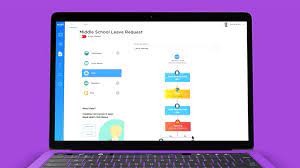In the ever-evolving digital age, the adoption of advanced systems to streamline administrative processes in educational institutions has become crucial. One such impactful innovation is the student information system (SIS), a comprehensive student information management system designed to simplify complex administrative tasks and promote efficient educational management.
Understanding the Student Information System
A Student Information System is a sophisticated software that manages student data, from academic performance to extracurricular involvement. As a vital part of the student information management system, the SIS streamlines administrative tasks and enhances educational outcomes by providing valuable insights into students’ learning and development.
Automating Administrative Tasks
A SIS automates numerous time-consuming tasks such as student enrollment, scheduling, and grading. Instead of manually handling piles of paperwork, administrators can rely on the student information management system to automate these tasks, thereby increasing efficiency and accuracy.
Centralizing Student Data
The SIS provides a centralized repository for all student-related data. This consolidation of information enables educators and administrators to track students’ progress, attendance, and behavior more effectively. Furthermore, having a unified source of data fosters better decision-making processes in educational strategies.
Enhancing Communication and Collaboration
Effective communication is crucial in an educational setting. The SIS bridges the gap between administrators, teachers, parents, and students. The student information management system offers a platform for sharing updates, academic reports, and other essential information, fostering enhanced collaboration and transparency among all stakeholders.
Promoting Data Security and Compliance
In an era where data privacy and protection are paramount, a robust SIS ensures that student data is securely stored and managed. The student information management system adheres to data protection regulations, providing a safe environment for storing and accessing critical student information.
Offering Scalability
With a SIS, educational institutions can easily scale up or down depending on their student population size. This flexibility provided by the student information management system is especially beneficial for rapidly growing or changing schools, allowing for smooth transitions and continuous operations.
Enabling Remote Accessibility
In today’s digital world, remote access to information is more important than ever. A SIS provides administrators, educators, parents, and students with remote access to necessary data. This aspect of the student information management system ensures uninterrupted academic processes, even in situations where in-person access is impossible or limited.
Conclusion
Embracing technology to simplify administrative processes is an essential step towards modern, efficient education management. A robust Student Information System offers numerous benefits, from automating administrative tasks and centralizing data to enhancing communication and ensuring data security.
By adopting a student information management system, educational institutions can focus more on their core mission—educating students—while ensuring administrative processes are efficient, accurate, and secure. As we move further into the digital age, the importance and influence of such systems in shaping the future of education continue to grow.

